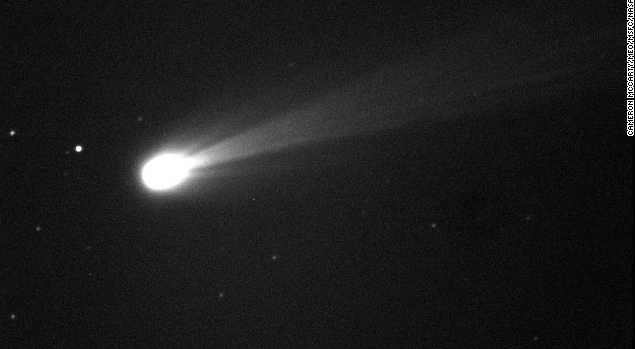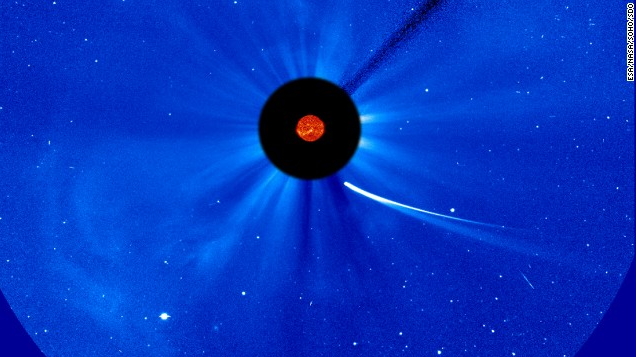[SatNews] "Nonetheless, this has been one of the most extraordinary comets we have ever encountered, and just goes to reiterate how beautiful, dynamic and exciting our universe is."

Comet ISON shines brightly on the morning of November 19. The comet was discovered by Russian astronomers Vitali Nevski and Artyom Novichonok in September 2012. It was named after their night-sky survey program, the International Scientific Optical Network.
A fleet of spacecraft watched ISON plunge toward the sun, including NASA's STEREO satellite, the European Space Agency/NASA SOHO spacecraft and the Solar Dynamics Observatory. ISON, officially named C/2012 S1, was 585 million miles away at the time.
Karl Battams, a comet scientist for the Naval Research Laboratory, said it is believed some parts of ISON's nucleus survived perihelion.
"It now looks like some chunk of ISON's nucleus has indeed made it through the solar corona, and re-emerged," he said. "It's throwing off dust and (probably) gas, but we don't know how long it can sustain that." However, he said, its fate is uncertain, and could end up being a record breaker, and a real dazzler throughout this month.
"Now it has emerged and started to brighten, we need to observe it for a few days to get a feel for its behavior," Battams said. "From the beginning, ISON has confused, surprised and amazed us, and in hindsight its latest little escapade really should not shock us," Battams said. "Nonetheless, this has been one of the most extraordinary comets we have ever encountered, and just goes to reiterate how beautiful, dynamic and exciting our universe is."
ISON swept about 730,000 miles over the sun's surface Thursday about 2 p.m. ET.
Comets are giant snowballs of frozen gases, rock and dust that can be several miles in diameter. When they get near the sun, they warm up and spew some of the gas and dirt, creating tails that can stretch for thousands of miles.

Comet ISON's position is seen near the sun at 9:30 a.m. ET on November 28. This composite image comes from NASA and the European Space Agency.
A video made by observing campaign member John Maclean shows the comet slicing toward the sun and then something, apparently ISON, emerging from the other side. Maclean is a fellow of the Royal Astronomical Society at Norman Lockyer Observatory Sidmouth in Devon, England.
The discovery stunned many in the comet-watching community and led some to nickname ISON the zombie comet.
"Comets are like cats; they have tails, and they do precisely what they want," David H. Levy said.

